A new school year means that it’s time to consider back to school food safety. If you plan to prepare and pack a lunch or snack for your child – extra care must be taken with perishable food to prevent the growth of bacteria that can cause foodborne illness.
Children are at an increased risk to a foodborne illness because a child’s immune system (the body’s defense to detect and destroy pathogens) is not as developed as an adult’s. Approximately half of the reported foodborne illnesses occur in children, with the majority of these cases occurring in children under 15 years of age. [1]
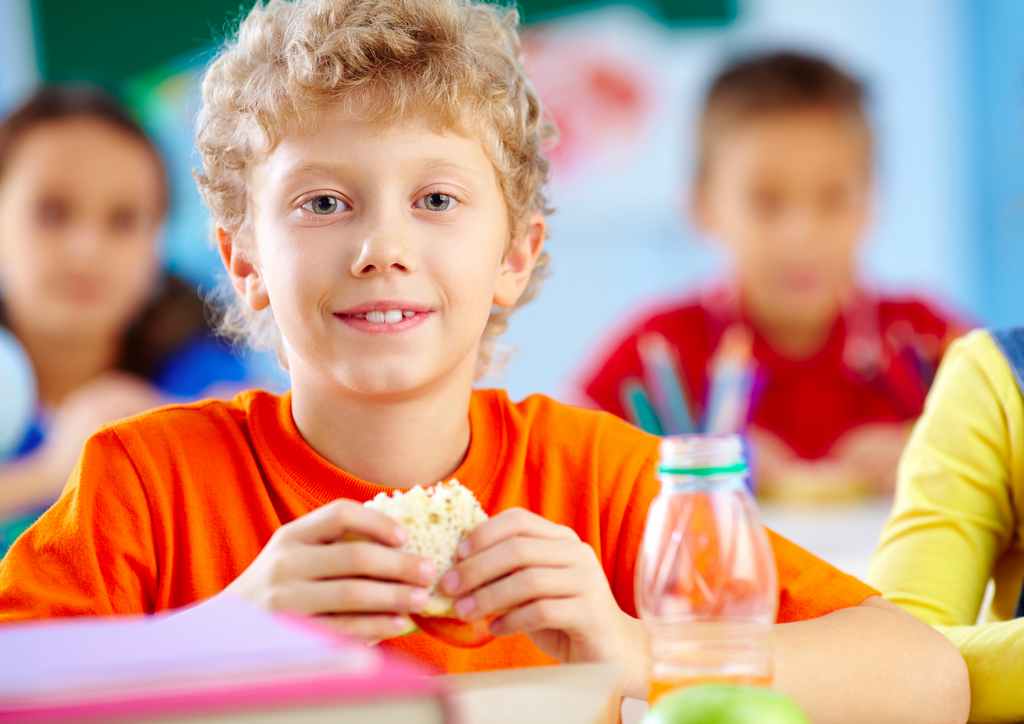 Image Source: Shutterstock
Image Source: Shutterstock Children at Increased Risk
Food poisoning or foodborne illness can affect anyone who eats food contaminated by bacteria, viruses, parasites, toxins, or other substances. But, certain groups of people (including children) are more susceptible to foodborne illness and are more likely to get sick from contaminated food.
- Learn about foodborne pathogens, cross contamination, cold and hot food safety, and best practices to prevent foodborne illness.
- Food Manager ANSI Certification: $99.00 - Valid in all States
- Food Handler Training: Only $7.00!
- 10% OFF: Enter Promo Code "train10off" at Checkout
Children are at high risk for foodborne illness for many reasons: [2]
- Still-developing immune systems, impeding their ability to fight infection;
- Lower body weight, reducing the dose of a pathogen needed to sicken them;
- Limited control over their diet and related food safety risks; and
- Reduced stomach acid production, decreasing their capacity to kill harmful bacteria. [3]
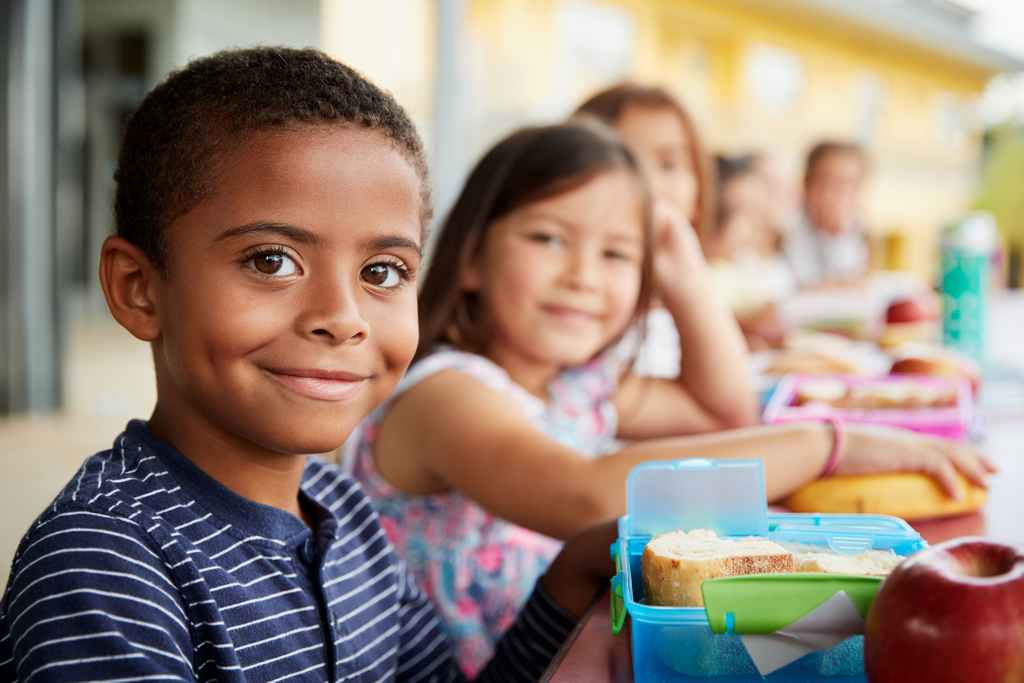 Image Source: Shutterstock
Image Source: Shutterstock Temperature Danger Zone
The “Danger Zone” is the temperature range between 40°F and 140°F. At temperatures of 90°F and above, they multiply rapidly.
While foodborne illness usually means uncomfortable intestinal flu-like symptoms, it can be serious for young children, the elderly and persons with chronic illnesses.
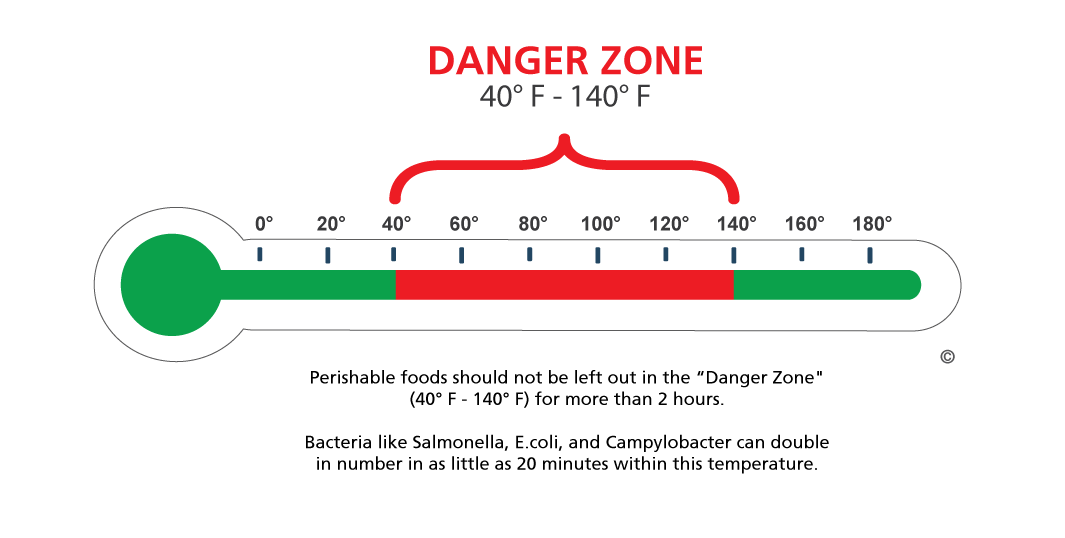
Key School Food Safety Lunch Packing Tips
- Perishable Food. If the lunch/snack contains perishable food items like luncheon meats, eggs, cheese, or yogurt, make sure to pack it with at least two cold sources. Harmful bacteria multiply rapidly so perishable food transported without an ice source won’t stay safe long.
- Freezer Packs. Frozen juice boxes or water can also be used as freezer packs. Freeze these items overnight and use with at least one other freezer pack. By lunchtime, the liquids should be thawed and ready to drink.
- Insulated Lunchbox. Pack lunches containing perishable food in an insulated lunchbox or soft-sided lunch bag. Perishable food can be unsafe to eat by lunchtime if packed in a paper bag.
- Insulated Containers. If packing a hot lunch, like soup, chili or stew, use an insulated container to keep it hot. Fill the container with boiling water, let stand for a few minutes, empty, and then put in the piping hot food. Tell children to keep the insulated container closed until lunchtime to keep the food hot – 140 °F or above.
- Packing Before-Hand. If packing a child’s lunch the night before, parents should leave it in the refrigerator overnight. The meal will stay cold longer because everything will be refrigerator temperature when it is placed in the lunchbox.
- Transport Safely. Store and transport lunch items safely.
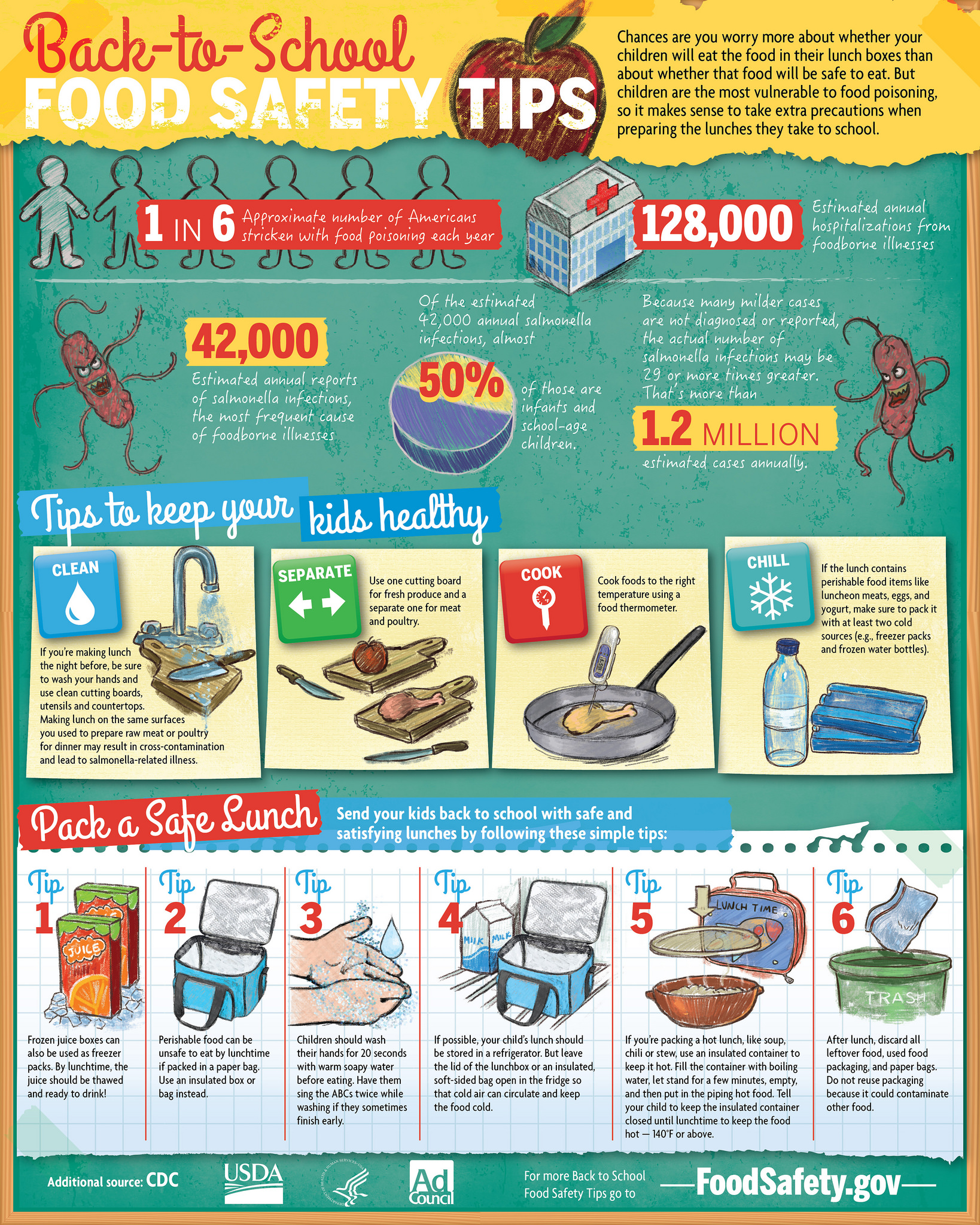 Media Credit: FoodSafety.gov
Media Credit: FoodSafety.gov Insulated Lunch Boxes
If you could send your refrigerator to school with your child, there would not be a problem with packed lunches. That’s because the best way to fight foodborne illness is to keep perishable foods – especially meat and poultry – cold during preparation, storing and serving.
A standard rule of food safety is to keep cold foods cold and hot foods hot until it is time to eat them. Temperatures between 40 degrees and 140 degrees, not uncommon in packed lunches that sit in warm classrooms for hours, are ideal conditions for bacterial growth.
Insulated lunch boxes can help keep food safer. Worry less about the decorations and more about the construction. The best box (hard-sided or soft) has an insulated lining and a pocket in which to place a thin freezer pack to help keep the contents cold until they are consumed.
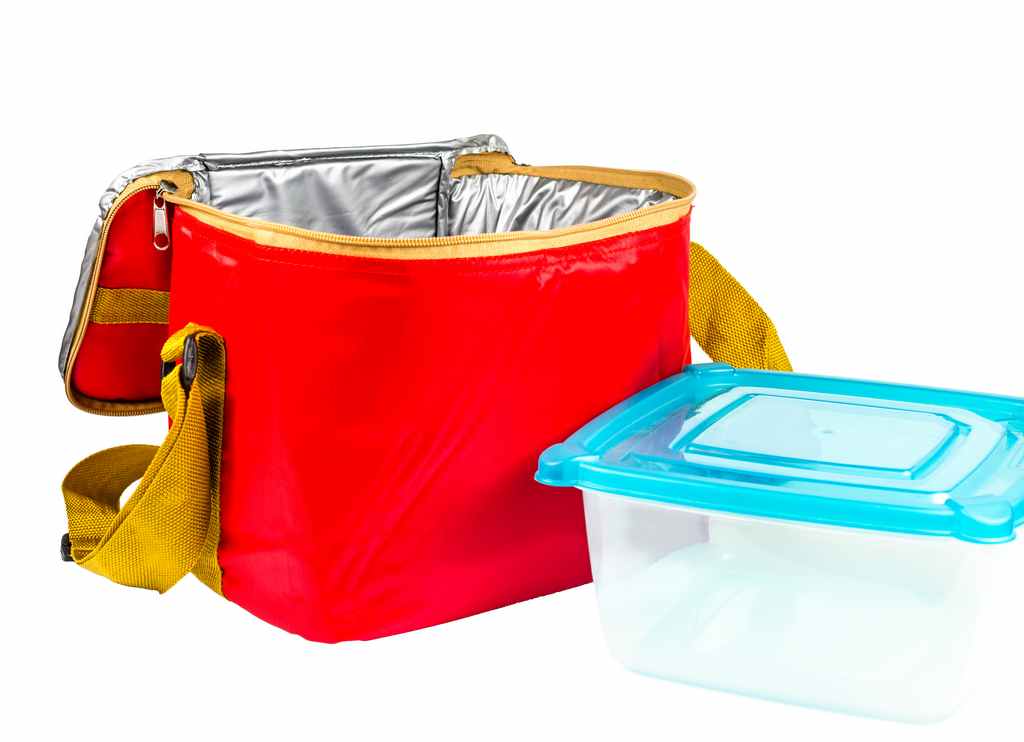 Image Source: Shutterstock
Image Source: Shutterstock Food Prep and Eating Area Cleanliness
Tables and countertops should cleaned and sanitized; they can be sanitized with a bleach solution (one tablespoon liquid bleach to a gallon of water).
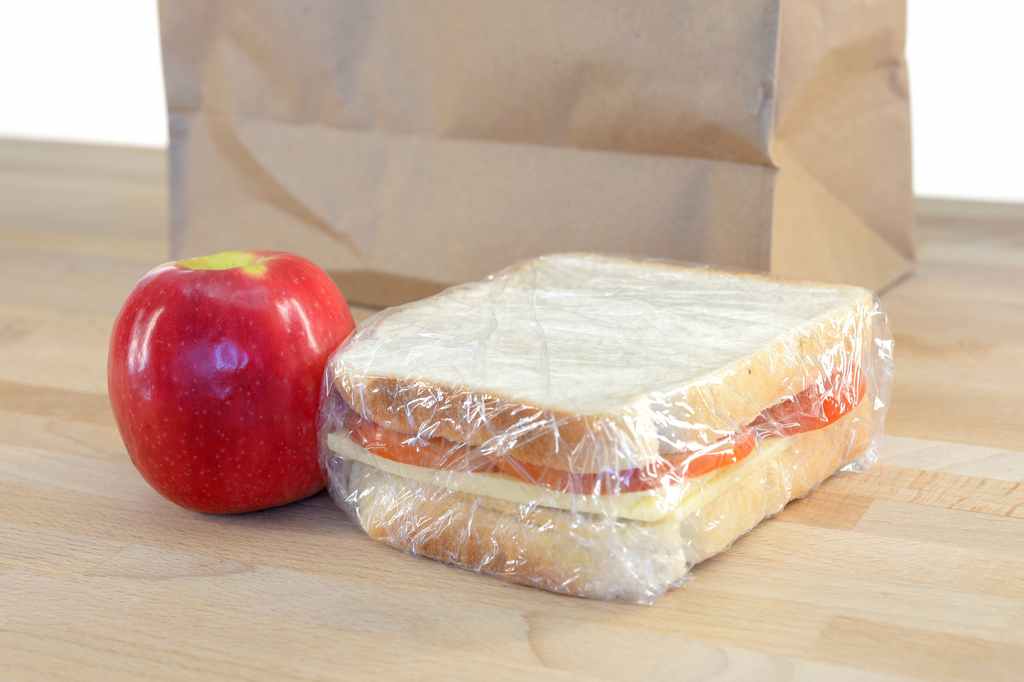 Image Source: Shutterstock
Image Source: Shutterstock Teach Children Importance of Cleanliness
Ideally, children should wash up before lunch, but that may not happen when they have only 15 to 20 minutes to eat. Alternatively, put a pocket-size hand sanitizer or moistened antibacterial towelette in the lunch box and instruct them to use it before they eat.
Additional Child Food Safety Resources
- “Don’t Give Kids a Tummy Ache” (UCANR) (English)
- “Don’t Give Kids a Tummy Ache” (UCANR) (Spanish)
- Children and Foodborne Illness (PDF 115 KB)
- Food Safety Concerns for Children under Five (Foodsafety.gov)
- Keeping Babies and Toddlers Safe from Foodborne Illness (FightBac.org)
- Information on food safety for children and teenagers (FDA)
Fun & Games
- Food Safety Activity Book (PDF, 795KB)
- BAC Catcher Game (PDF, 1.11MB)
- Lose A Million (Bacteria) Game
References
- Centers for Disease Control and Prevention (CDC). Summary of notifiable diseases—United States, 2007. MMWR, July 9, 2009; 56(No. 53): 1-94. Accessed at <http://www.cdc.gov/mmwr/ preview/mmwrhtml/mm5813a2.htm> on November 2, 2009.
- Mead, P., L. Slutsker, V. Dietz et al. Foodrelated illness and death in the United States. Emerg Infect Dis, Sept-Oct 1999; 5(5):607-625. Accessed at <http://www.cdc.gov/ncidod/ eid/vol5no5/mead.htm> on November 2, 2009.
- Buzby, J. C. Children and microbial foodborne illness. Food Review, 2001; 24(2):32-7.
